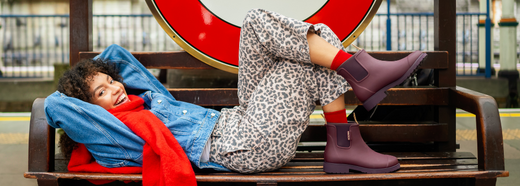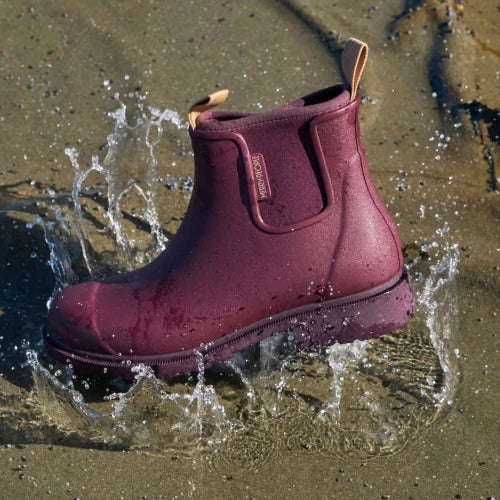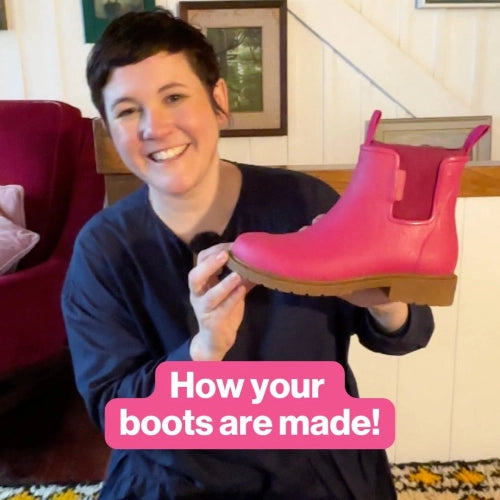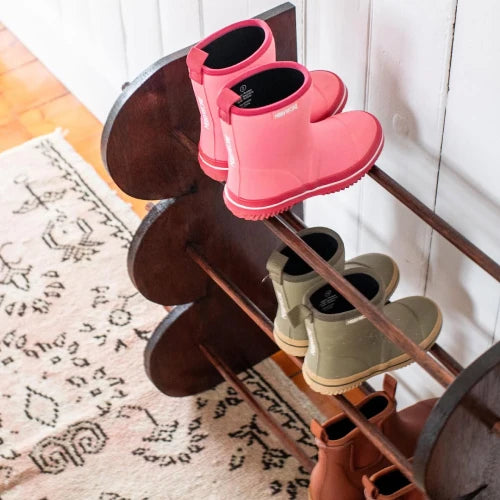The rainy season can be unpredictable. When you first glance out the window, you find yourself thinking there will be clear skies all day long. But when the rain starts coming down, you'll be happy to be wearing your business casual rain boots — or bummed you’re not. Either way, you’ll likely have to brave a commute with slippery sidewalks and puddle jumping.
To make the rainy season as comfortable as possible, you need boots that seamlessly transition from the soggy streets to your office. This feat requires unique footwear. Your boots need to integrate waterproof technology and professional style.
Remember, rubber boots keep your feet warm. But it would be best if you also had enough traction to avoid slipping on slick, wet surfaces and a lining that’s capable of keeping your feet dry. Here are some of the most important factors to consider before buying a new pair of rain boots.
Water Resistance & Style
Style is a significant consideration if you need your boots to follow a dress code in your work environment perfectly. Some people may find short rain boots more comfortable and better-suited for specific business setups. Others find knee-high boots preferable when working. However, style-oriented boot choices tend to sacrifice a bit of water resistance. Therefore, to have complete confidence and protection, you must go with a boot that offers the best water resistance for any foreseeable circumstances, while also fitting within your office dress code.

Traction
Your sneakers aren't going to keep your feet dry, that's for sure. While rain boots will save you from the dreaded wet sock, they should also come with other expectations. For example, they should keep your feet from slipping on slick, wet surfaces. What good would it be to have dry feet and end up falling into a puddle of water?
Some rain boots are designed with extensive, deep lugs to help you walk or work in mud, snow, or high water. On the other hand, the design of casual business footwear keeps you on your feet in general conditions. Whatever the case, you can’t go wrong with a boot that’s been traction-tested.
Insulation
Before you get your new rain boots, you have to assess the weather patterns of where you live. The climate plays a vital role in determining the perfect option for you. If it rains all year round, you’ll need a versatile boot that you can wear in several different setups. Heck, you may need two or three pairs. If you occasionally work in muddy conditions, you need a more durable boot.
Warmth is another primary consideration. If you stay in an area where the weather can get freezing pretty quickly, you'll likely prefer a pair of insulated boots. These types of boots prevent heat from escaping too fast and can keep your feet pleasantly warm. If the weather is usually sweltering, then it’s best to go with a light-weight boot that can keep your feet cool. But sometimes, you may never know what the temperature will be the next day. In that case, a lightly insulated rain boot can work well with socks when temperatures fall.
Comfort And Fit
Since you’ll likely be wearing your rain boots for at least a few months, you’ll need to make sure your boots offer a comfortable fit. Nobody wants to have aching feet every time they get home from a long day at work. That’s why you should ensure your boots fit well and are comfortable while sitting, standing, and walking.
Fit is also an important consideration. Most traditional footwear have laces or zippers to help with fit. Alternatively, rain boots usually don’t have laces because these would compromise water resistance. At the same time, you’ll rarely find half sizes for rain boots. As such, it’s often best to find a boot that fits true to size, which you can check by making sure your heel doesn’t move around too much once you’re wearing the boot. A flexible lining also makes it easier to slip your boot on and off without hassle.
Final Thoughts
Before buying your next pair of rain boots, you need to consider a few factors. First off, your rain boots should be able to keep your feet dry in all your everyday work and commute-related circumstances. That's especially true if your waterproof footwear has to fit into a particular workplace dress code.
Since wet surfaces tend to get slippery, you should ideally get a traction-tested boot. Also, consider the climate in your area and buy a boot that will keep your feet warm in freezing weather or cool in hot, humid conditions. Since you're likely to be wearing your rain boots for different reasons throughout the year, it’s important to find a comfortable pair of boots that you can wear during both the winter months and spring showers!












